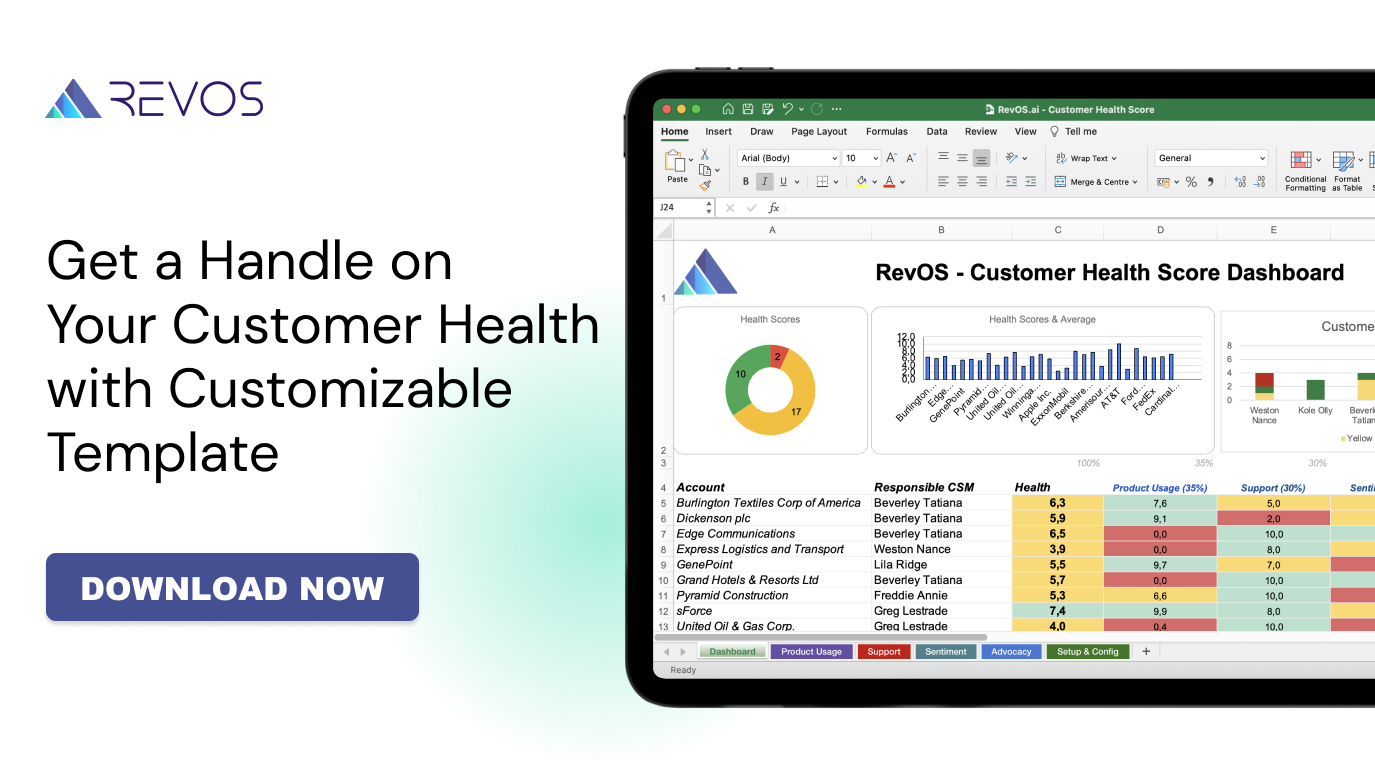Maximizing Productivity: The Impact of Activated Integrations on Product Usage
 Renat Zubayrov
Renat ZubayrovThe number of activated integrations in a software or SaaS product can indicate that the customer is fully utilizing the product and finding value in it. Additionally, a high number of activated integrations can also suggest that the customer has a high level of engagement with the product. This metric can be an important factor in determining a Customer's Health Score.
However, if a customer has a low number of activated integrations, it can indicate that they are not fully utilizing the product. Low utilization of the product can also increase the likelihood of customer churn, as the customer may not be finding enough value in the product to continue using it.
Overall, the number of activated integrations can be a useful metric for understanding a customer's level of engagement with a software product and can help predict their likelihood of churning.
Benchmarks
Benchmarking for a number of active integrations is hardly possible as individual product integration capabilities as well as the depth of integration can vary from product to product and industry to industry. Many values of products can’t be utilized without at least one integration, for example, API-driven products like Twilio or Stripe whereas other products, like Monday.com or different CRM, can generate significant value standalone. It is however essential that a number of active integrations have a significant positive impact on customer churn therefore measuring and controlling for it is essential for any customer health scoring initiative.
The real-world examples for different products:
- HubSpot: HubSpot, a leading marketing and sales software provider, offers a wide range of integrations with third-party tools, including Salesforce, Google Analytics, and Shopify. According to a case study by HubSpot, customers who use five or more integrations are significantly less likely to churn than those who use only one or two integrations.
- Shopify: Shopify, a popular e-commerce platform, offers a range of integrations with payment gateways, shipping providers, and other third-party tools. According to a study by CartHook, a Shopify checkout optimization tool, customers who use three or more integrations have a significantly higher order value and are less likely to abandon their carts than those who use only one or two integrations.
- Lever: Lever, a recruiting software platform, offers integrations with applicant tracking systems, job boards, and other third-party tools. According to a case study by Lever, customers who use four or more integrations are significantly more likely to renew their contracts than those who use only one or two integrations.
- Slack: Slack, a leading workplace communication platform, offers a wide range of integrations with other productivity tools, such as Trello, Google Drive, and Dropbox. According to a case study by Slack, customers who use five or more integrations are significantly more likely to renew their contracts than those who use only one or two integrations.
Challenges
There are several challenges in measuring and controlling the number of activated integrations when it comes to customer health scoring. Some of the main challenges include:
- Data availability: In order to accurately measure the number of activated integrations, the relevant data needs to be easily accessible and in a format that can be easily analyzed. If the data is not readily available or is in a format that is difficult to work with, it can be challenging to accurately measure the number of activated integrations.
- Data variability: Different customers may use the software product in different ways, leading to variability in the number of activated integrations. This variability can make it difficult to compare the engagement of different customers and may make it difficult to identify patterns of engagement that are indicative of a customer's likelihood of churning.
- Integration management: Managing and monitoring integration activation can be challenging, especially if the customer's team is not technical or doesn't have the resources to manage the integrations.
- Complexity: Some software products may have a large number of potential integrations, making it difficult to keep track of which integrations are activated for each customer. Additionally, some customers may activate and deactivate integrations frequently, which can make it difficult to accurately measure engagement over time.

Download the Customer Health Score Template created by RevOS for customer success managers and sales teams that provides valuable insights for strategies for the companies for example churn risk, upsell opportunities, product development, and customer segmentation.
This free and customizable template, designed for Google Spreadsheets is based on deep-dive interviews with over 80 customer success professionals and incorporates over 200 comments and improvements, this template is a great starting point for designing and monitoring your health scores. With the ability to experiment with different formulas and rules, you can iterate quickly and confidently without risking resources or time.
Alternatives
There are several alternatives that can be used in place of or in addition to Churn Risk measuring the number of activated integrations for customer health scoring. Some alternatives include:
- Usage data: Tracking how often and in what ways customers are logging in and/or using the software product can provide valuable insights into their engagement with the product. Usage data can include metrics such as the number of logins, the length of sessions, and the specific features or functionality that customers are using.
- Customer feedback: Gathering feedback from customers directly can provide valuable insights into their satisfaction with the product and their likelihood of continuing to use it. This feedback can be gathered through surveys, interviews, or customer support interactions.
- Net Promoter Score (NPS): NPS is a customer loyalty metric that measures the likelihood of customers recommending the product to others. NPS can be a useful indicator of customer satisfaction and engagement with the product.
- Retention rate: The retention rate measures the percentage of customers who continue to use the product over a certain period of time. High retention rates can indicate that customers are finding value in the product and are unlikely to churn.
In summary, the number of activated integrations can be an important data point for calculating customer health scores and understanding customer engagement and value. By analyzing this data, customer success and sales teams can identify opportunities to improve retention, upsell additional features, and provide targeted support to customers who may need it.
Read more about revenue operations, growth strategies, and metrics in our blog and follow us on LinkedIn, Youtube, and Facebook.
← Go back to blog